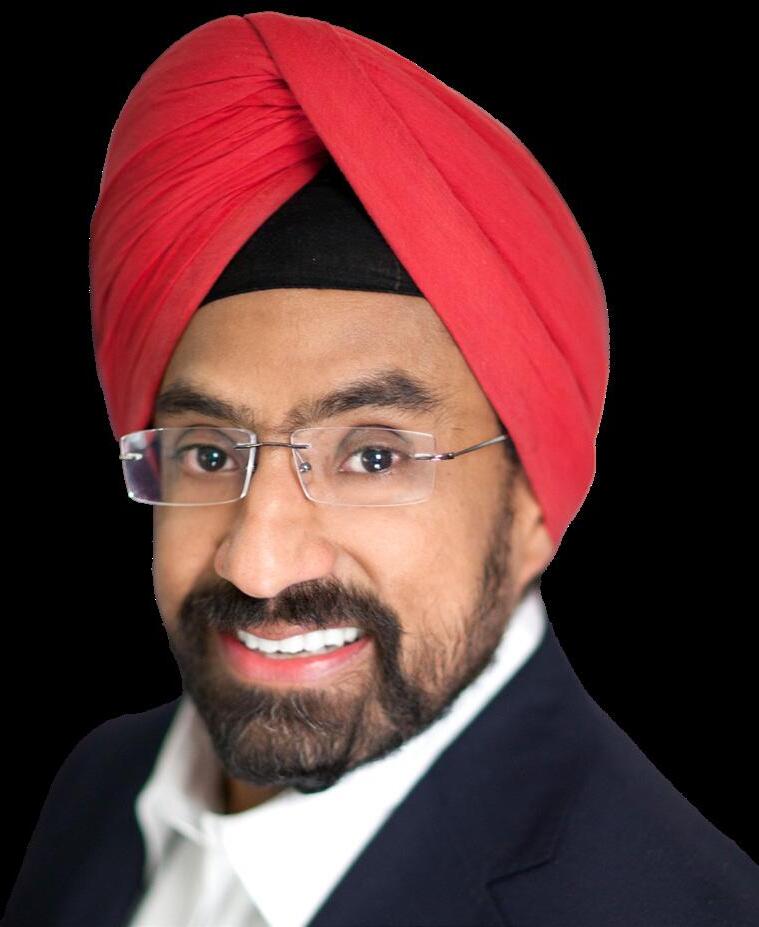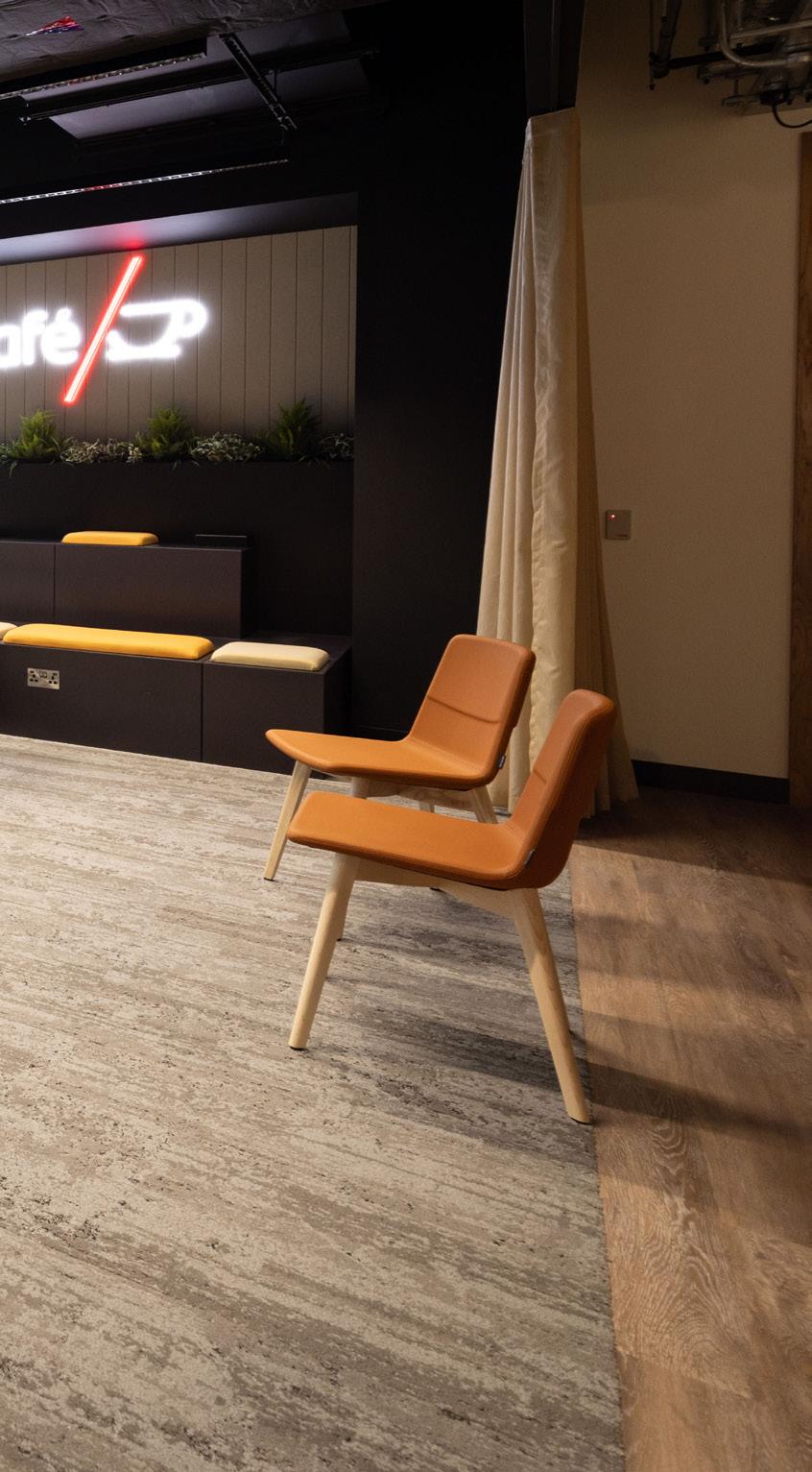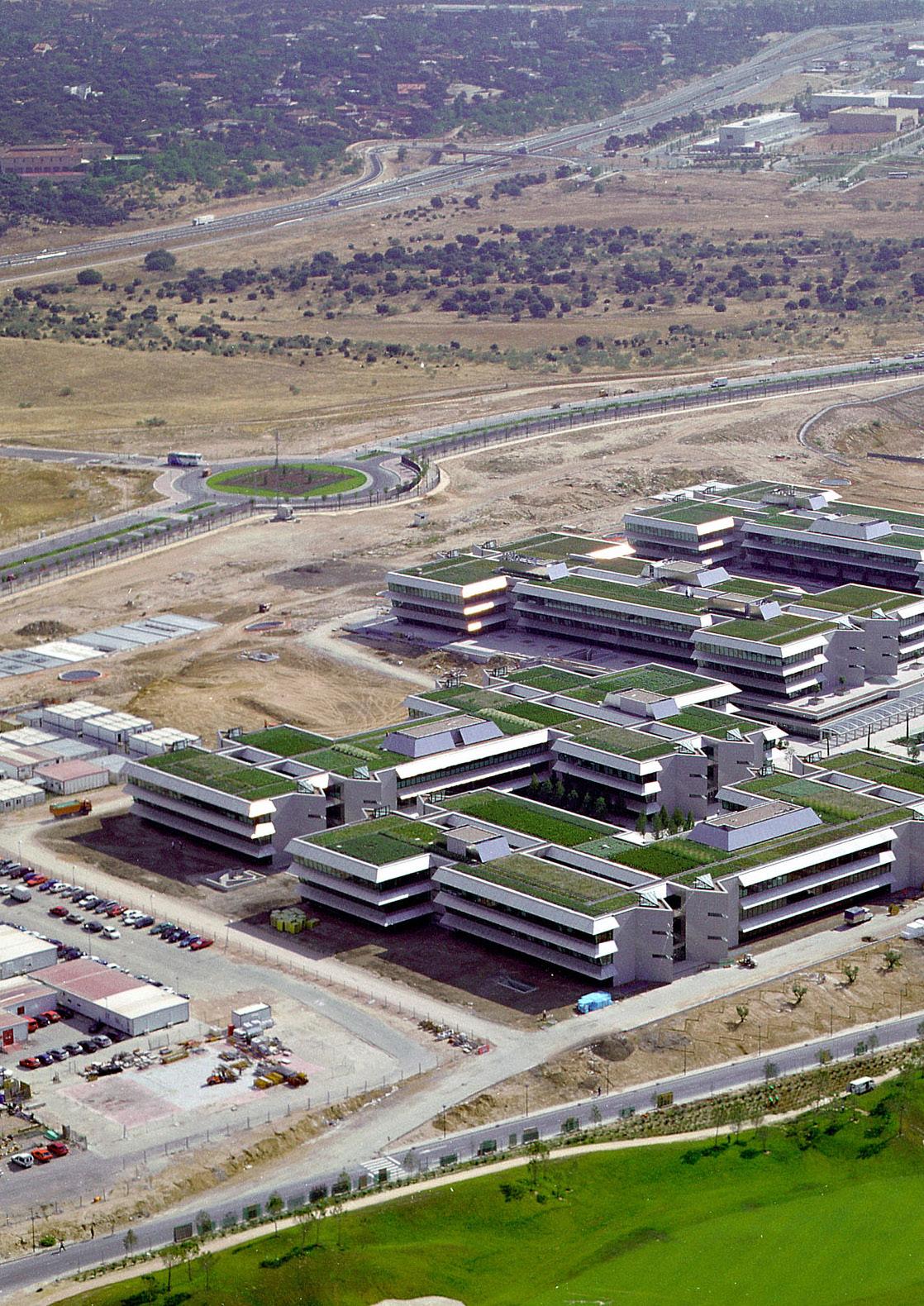This is the headline of the feature
IN ASSOCIATION WITH:
IN ASSOCIATION WITH:




This is the headline of the feature
IN ASSOCIATION WITH:
IN ASSOCIATION WITH:




Jasmeet Narang, Chief Transformation Officer & Director of Financial Crime at Santander UK, on establishing the bank’s future through digital transformation
As Chief Transformation Officer and Director of Financial Crime at Santander UK, Jasmeet Narang has accrued extensive experience in banking technology throughout his career.
“I’ve been in banking for a long time – around 25-26 years in fact,” Narang says. “I came to Santander as part of its GE Money Bank acquisition back in 2008.
“I worked for several years at GE in its consumer finance business, before moving over to work laterally with Santander on its banking side. Throughout that time, I’ve had a plethora of roles, from running commercial P&Ls to different operations and so on.”
Indeed, it was thanks to these roles that Narang was given the opportunity to run transformation for Santander UK, a responsibility he has felt unable to relinquish ever since.
Narang: Aligning Santander to a shared vision
“The way I saw my role in transformation was like an orchestrator sitting in the middle of all banking operations, working with IT and digital teams, as well as front-facing teams and data teams,” Narang continues.
“In this way, I’m able to bring everything together to help transform the bank as we embark on our digital journey as a financial services provider looking to best serve our customers across both retail and corporate banking divisions.



“So, that’s what I do, and I couldn’t imagine doing anything else.”
Of course, life as a Chief Transformation Officer doesn’t come without its challenges, particularly when you’re at a large financial institution like Santander.
For Narang, it’s pulling together the breadth of the organisation into an aligned, transformative path forward that is the most challenging feat to achieve.
“One day you’re dealing with a tech team, the next day a data team and then the third day a customer-facing team,” he says.
“So, managing relationships across different divisions can, of course, be challenging, particularly when you’re bringing everyone on board to the same vision, the same goal for transformation and the same objectives for banking transformation.
“At the same time, covering the breadth of the organisation is what I like. It’s a challenge I relish and it’s why I’m in the job, to help align up to 20,000 employees with one aim.
“The only way you can achieve this is by collaborating effectively with various stakeholders at every level of the

“We’ve completed the single largest transformation from a banking point of view and dramatically optimised the cost-income ratio”
JASMEET NARANG
CHIEF TRANSFORMATION OFFICER & FINANCIAL CRIME DIRECTOR, SANTANDER UK
TITLE: CHIEF TRANSFORMATION OFFICER & FINANCIAL CRIME DIRECTOR
LOCATION: UNITED KINGDOM
Jasmeet (Jas) Narang is currently Chief Transformation Officer & Financial Crime Director at Santander UK.
As part of the CTO role, Jas and team are responsible for and working with teams across Santander UK & Group to build core capabilities including Customer Interactions, Digital, Process Re-engineering, Data, Agile Way of Working, Supply Chain Management & People/ Organisation levers to help set the foundations for the bank to grow in the future whilst maximising productivity. He also manages the teams that deter, detect and disrupt financial crime across Santander UK.


We are spearheading transformation in banks to deliver exceptional customer experiences. We leverage our expertise in Banking processes, Emerging technologies and most of all People to help several global banks thrive in the digital world.
OUR BANKING EXPERTISE
Legacy Modernisation Open-banking Cloud Migration
Advanced Data Analytics
Personalised Digital Customer Experiences


Coforge, the leading digital services and solutions provider, is ensuring financial institutions can balance cost optimisation with digital transformation
Coforge started as a training company almost 40 years ago, arming people with the skills to succeed in technology.
Today, the organisation is one of the world’s fastest-growing digital services and solutions providers, delivering real-world business impact to clients.
However, those roots in training still serve Coforge well when it comes to talent acquisition, development and retention, as Gautam Samanta, Global Head of Banking and Financial Services (BFS), explains.
“Coforge has one of the lowest attrition rates in the industry,” says Gautam.
“There is a huge focus on upskilling, our employee wellbeing policies are some of the best in the industry and we encourage people to give back to society. With this combination, we have a highly-motivated workforce.”
As his title indicates, Gautam oversees the BFS unit, Coforge’s largest vertical.
Financial institutions are, of course, under huge pressure to balance cost optimisation with the need to stay competitive, while also considering the everchanging regulatory landscape and an increasing cybersecurity threat.
Coforge’s focus, therefore, has been to use newer capabilities like automation to improve cost efficiency for banks, while also assisting with core modernisation.
“The BFS unit is a full spectrum service covering both technology and operations, while enabling newer technologies and offering contextual solutions,” Gautam continues. “We’ve started focusing on the core sub-verticals beyond just BFS, so we’re able to deliver compelling value.”
Gautam reveals the BFS unit has shown exceptional growth thanks to its ability to drive efficiency and boost customer loyalty.
Recent engagements have seen Coforge work alongside major industry players to build new products and platforms, and transform customer experience.
This included helping a large UK bank to transform its financial crime platform and delivering a next-generation payment platform for a large global bank.
“Things like this help financial institutions get value in a timely manner and help us to increase the stickiness we see with our customers,” Gautam goes on.“We’re constantly innovating and embracing emerging technologies like generative AI so that we can keep delivering the value our customers expect.”

organisation, bringing them together towards that one common goal and laying the groundwork for how to achieve that.”
Indeed, over the past three to four years, this is what Narang has helped Santander UK to achieve through the successful implementation of digital transformation across the organisation.
Understandably, Narang reveals this is his proudest achievement at Santander UK.
“We’ve completed the single largest transformation from a banking point of view and dramatically optimised the cost-income ratio for the bank,” he adds.
“Some years back, we used to be close to the bottom quartile, and today we’re very much in the top quartile.
“That’s a direct result of the transformation programme that we’ve been through over the last few years.”


“Covering the breadth of the organisation is what I like. It’s a challenge I relish and it’s why I’m in the job, to help align up to 20,000 employees with one aim”JASMEET NARANG CHIEF TRANSFORMATION OFFICER & FINANCIAL CRIME DIRECTOR, SANTANDER UK
Santander UK: Leading a digital transformation journey
Santander UK has been on a remarkable digital transformation journey over the past few years, and Narang has been leading the charge.
But it isn’t just him; hundreds of Santander employees have been working together in a concerted effort to achieve the bank’s transformative aims. The journey has brought together more than 300 initiatives to improve the digital experience for Santander’s customers.
Transformation has touched all areas of the bank, from simplifying the customer journey to building new data capabilities, and from streamlining strategic partnerships to re-engineering initiatives.
“I think we’ve achieved the biggest transformation of any bank in the UK over the last few years,” says Narang.
As far as he is concerned, the transformation journey Santander UK and the wider group have been on so far has merely laid the groundwork for the bank’s future growth and success.
“These are just the building blocks,” adds Narang. “Now we can build a skyscraper on top of it from a growth point of view.”


Santander UK’s future growth will also be propelled by changing winds in the macroeconomic landscape. Challenges in the past few years, including inflation and the cost-of-living crisis, are expected to subside, giving Santander the perfect opportunity to scale its digital banking services.
“We have to take the foundations we’ve built and generate business growth from those changes,” Narang notes. “So, it’s not just efficiency that we’re trying to achieve, but actually growing in the market. That’s the next phase of our development.”
This goal to secure future growth is not constrained to just Santander UK, either. The bank’s transformation journey has been implemented across the wider Banco Santander group. It’s even got a name: One Transformation.
“It doesn’t matter if it’s Santander in the UK, Spain, Germany, the US or Brazil; the vision is streamlined across the globe, and you can see that in the similarities between the group’s different digital platforms,” adds Narang.
A streamlined vision is matched by Santander’s approach to using one common mobile banking application across the four key European markets in which it operates: the UK, Spain, Poland and Portugal.
“In our key European markets, we brought the talent, thinking, infrastructure and core layers together to create our mobile banking application,” says Narang. “Around 70-80% of our mobile banking components are similar across the board, with nuances in place for each of our European marketplaces to best meet consumer needs.
“The last 25-30% of the stack is tailored to specific local markets, but the core of what we offer is aligned to what we do as part of the larger group.”
Over 40% of SMEs consider availability of online and mobile tools as the most critical area when selecting a primary bank
Even more prefer availability of branches and robust relationship management
Create a digital experiences which is
Streamlined
Minimize steps in customer journey to complete onboarding
Integrated
Connect with 3rd party business apps to deliver added value
Connect with us
AI enabled
For better customer service, navigation and support
Personalised
Use real-time data analytics to identify instant cross-sell oppotunities
With the rise of technological advancements, businesses believed their customers would solely migrate to digital channels, causing offline business models to become obsolete. However, it has become apparent that customers seek more than the mere convenience provided by digital channels; they desire human interaction and tangible experiences. This observation accentuates the critical importance of striking a balance between traditional and contemporary approaches, and of leveraging digital tools to complement, rather than supplant, the personal touch in banking services.
It is hardly surprising that numerous businesses, which initially launched as purely online entities, have progressively transitioned towards establishing physical stores and branches. This strategic shift aims to forge deeper connections with their customers and cater more effectively to their needs. However, this evolution should not be misconstrued as a diminishing relevance of digital platforms. The underlying issue resides in the perception of digital technologies by industries. Digitalization has often been regarded merely as a distinct channel, rather than recognizing its potential to enhance and complement physical customer experiences.
Businesses embracing a blend of physical and digital operations are setting themselves up for unparalleled success, outshining peers who limit themselves to just one realm. This hybrid approach broadens their reach and enhances their resilience, making them more adaptable and competitive in today’s dynamic market landscape. For instance, a banking mobile application built for small business customer onboarding can be used by the customer directly. Moreover, it can also be used by the branch staff to quickly and seamlessly onboard walk-in customers, allowing them to form relationships immediately.
Concurrently, real-time data analytics can provide inputs on other value-added services that might be relevant for customers, leading to cross-selling opportunities for banks and a smooth customer experience. AI-enabled processes can help the customers and the bank fill out applications faster with the help of information that otherwise might not be readily available. With an intuitive application that allows quick and seamless on-boarding, banks can now reach larger audiences which were previously inaccessible.
During our research work with one of the largest UK banks, the head of SME onboarding shared, “it is imperative that we innovate, keeping our customer at the center of everything we do, crafting every experience with their journeys in mind, right from when they see us for the first time to when they have become long time customers, so that we can enable them in life, and do so with elegance and speed.”
To maintain customer-centricity, banks with a legacy of prioritizing their customers must embrace digital technologies. This will enable banks to cater to the specific needs and preferences of the customers and provide them with the best possible experience. With this, banks can ensure that their customers engage with them through the channel they prefer, thereby enabling customers to be their best selves. It is not just about going digital fast but leveraging digital to build a complete, wholesome customer experience.

Our stated vision is that we’re going to be a digital bank with branches, and a human touch”JASMEET NARANG CHIEF TRANSFORMATION OFFICER & FINANCIAL CRIME DIRECTOR, SANTANDER UK
Indeed, Santander’s latest mobile banking app is relatively new, and Narang is pleased to see it receiving rave reviews and challenging the best practices set by the likes of other challenger banks.
“In the UK, we’re in the process of migrating customers from the old platform to our new one,” adds Narang. “We’re doing this in a controlled manner over the next couple of months, as opposed to going crazy about it. It’s about making sure customers are comfortable shifting over.”
Narang continues: “The advent of digital mobile banking post-COVID-19 amongst the population in the UK has gone sky-high, frankly.

“There is no option but to be the best at that in the marketplace. The reality is we were lagging behind some of the competition previously, but now we’re not just catching up, we’re trying to leapfrog them. And I’m pretty confident that given what we’ve got on the table, we’ll do that in the coming months and years.”
Of course, while Santander is scaling its digital banking capabilities as it looks to outperform neobank rivals, it’s vital to Narang and the wider group that these digital endeavours are balanced against
continuing to offer in-person banking options for those who need them.
“Our stated vision is that we’re going to be a digital bank with branches, and a human touch,” Narang emphasises. “That means continuing to operate branches, and we’re not shying away from that.”
He adds: “We’re very happy with where we are with the number of branches we have. This brick-and-mortar setup is our way of continuing to serve certain sections of society that still need in-person services. We are also investing in refurbishing some of our branches and opened two new Work Cafes last year.
“We’re going to keep growing in-person banking for the customers that need it. We’re working with the government to set up cash hubs, ensuring there remains access to cash for consumers at the high street level.
“The needs of these customers remain at the front of our minds, and our strategy is crystal clear – going both hard and fast with our digital adoption strategy while remembering that other customers of certain demographics need physical help, advice and a personal experience. We’re committed to continuing that presence on the high street.”
Indeed, while the needs of some demographics rely on in-person banking services, the requirements of other Santander customers sit at the cusp of innovation.
That is why Santander UK has recently set up an internal AI working group, to see how AI (particularly Gen AI) can be further applied across the organisation, including in risk compliance, data privacy, data protection and more.


“It’s not just efficiency that we’re trying to achieve, but actually growing in the market. That’s the next phase of our development”
JASMEET NARANG
CHIEF TRANSFORMATION OFFICER & FINANCIAL CRIME DIRECTOR, SANTANDER UK
Narang explains: “All our relevant experts gathered round the table and said, ‘this is the framework we’re going to set up, this is how we’re thinking about use cases where we can apply AI on the ground, and this is the support we’re going to give team members who come up with new ideas on how to best use AI’. It’s about finding the best use for AI, not using it for the sake of it.”
For Narang and co, they’d rather not let the possible applications of AI languish in the bureaucracy of the organisation, instead testing possible applications as quickly as possible.
“The aim is to continue to implement AI,” adds Narang.
We believe in working with and building strong partnerships with third-party strategic partners where their expertise will enhance our ability to deliver for our customers. We make sure their solutions are closely aligned with our existing frameworks and standards.
Indeed, while the foundations Santander has in place will help it on its growth path, for Narang and co, today it’s about
scaling the skyscraper from established foundations.
“We’re looking to scale from all angles,” asserts Narang. “So, not only for personal customers but for businesses too.”
Of course, Santander UK will look to stay at the forefront of technological innovation. For Narang, the financial institutions that succeed in implementing solutions like Gen AI will be those that apply it to the right use cases.
“The technological landscape will always continue to change and evolve,” he says. “There’s always innovation coming for the big tech giants and other niche players.
“For me, the key to success is how an organisation best utilises the technology on offer because there’s no technological dearth right now; it’s booming.
“It’s about using technology most suitable for individual needs – that will be the hallmark of an organisation’s success and, at Santander UK, we have a strategic workforce plan to ensure we’re using the latest innovations in the right way.”

Unity Place
Grafton Gate
Milton Keynes
MK9 1UP
santander.co.uk
POWERED BY:

POWERED BY: